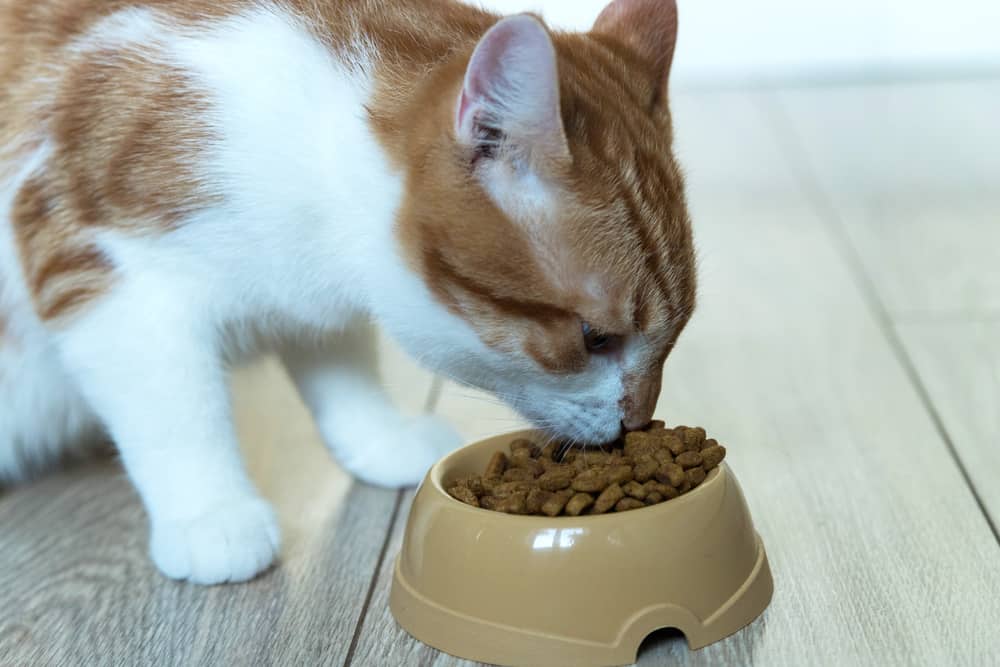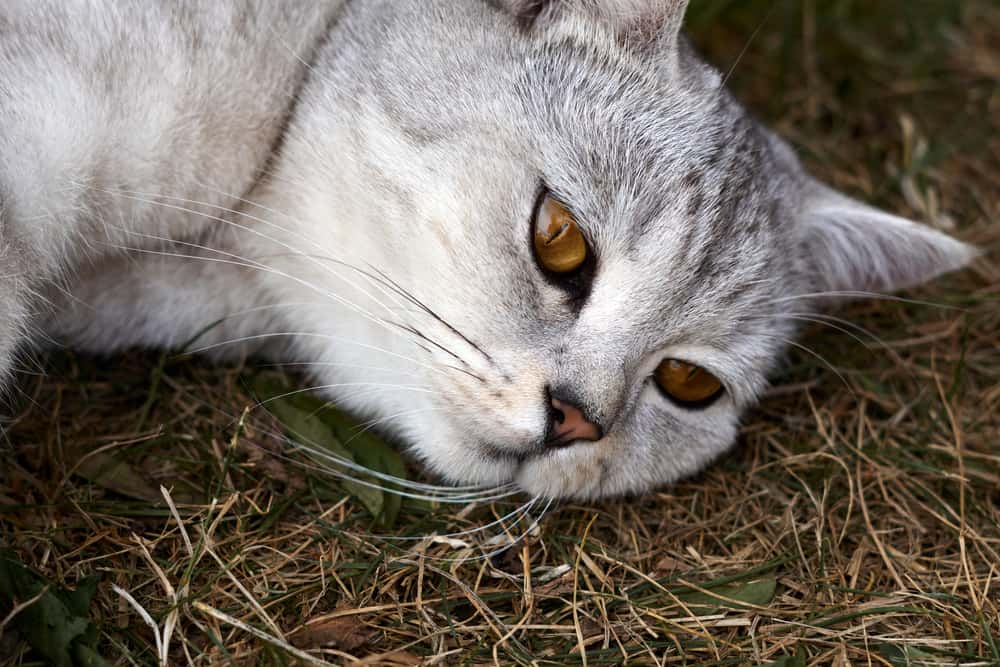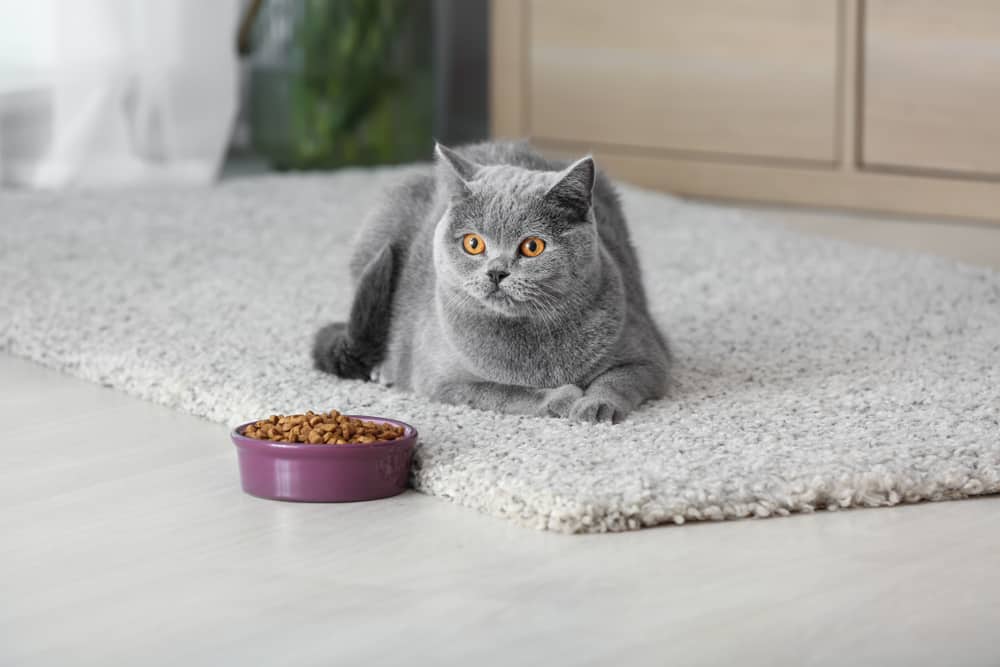Most people believe that the cat’s menu is not a mystery, and it seems that everyone knows what these animals should eat. You probably know people convinced that it is wise to offer a cat some milk, while others feed their furry friends only with kibble or raw meat.
My neighbor goes fishing every morning to provide a fresh meal for his beauty, while the new-age generation has a weird idea to transform cats into vegetarians. With so many different approaches, it is a moment to discover what do cats eat exactly. Let’s see.
Cats Habits and Biology
Modern cats descended from the African wildcat, and the first ones started to live with humans about 6,000 years ago. Nowadays, approximately 60 million of these beautiful furry creatures live as pets in the US. It is estimated that additional 300 million kitties enjoy their human families worldwide.
People initially bred them as a defense against rodents, but they became pets over time. Thanks to artificial selection, you can find 36 domestic cat breeds classified into small, medium, and large groups that exist nowadays.
Cat’s feeding
Cats are part of the natural environment and are not a threat to other species due to numerous biological and behavioral reasons. In fact, these animals have crucial roles in the local ecosystem balancing, and any attempt to remove them can have severe consequences.
Feral cats are opportunistic feeders that consume only food they can find without much effort. They are primarily scavengers and hunt only when they need to, usually rodents.
Surprisingly, cats consume birds only incidentally. Keep in mind that they never hunt a specific bird species but individual birds of different, the most common species in the area.
Compensatory predation
Cats almost always prey on ‘doomed surplus’, including ill, starved, and weak animals that would certainly die. In other words, those are animals which death doesn’t affect the overall population.
Complex ecosystems
It is always necessary for cat, bird, and rat populations to be in balance. Only when they coexist, you won’t get a problem with the overpopulation of one species.
The vacuum effect
Cats live only in an area with enough food and water sources and appropriate shelters. You should be aware that their number is always in correlation with these resources’ availability.
Once you remove cats living in a particular place, other cats will move in from neighboring territories. This effect is a reason why most animal control policies fail.
The only way to keep the number of kitties under control is the trap-neuter-return approach. That way, people can stabilize cat populations without new kittens while sterile adults keep the territory safe from animals from the neighborhood.
What Do Cats Like to Eat Most
Domesticated cats enjoy eating a few small meals daily, so they usually find a free-choice feeding schedule highly desirable. Like any other carnivores, they need a diet high in proteins and fat, so you should provide these ingredients from meat, fish, and eggs.
Such food contains the amino acid taurine necessary to prevent heart disease, promote healthy reproduction, and maintain healthy eyes. It is also a source of vitamin A and E, fibers, and a balanced amount of fatty acids.
Keep in mind that pregnant and breastfeeding cats need to get 50% to 70% more proteins. They are prepared for regular food only after kittens begin weaning.
Since indoor cats often eat human food and never exercise enough, you need to prevent your kitty’s obesity by controlling its portions. Finally, you should offer your beauty a special diet if the hairballs don’t pass into the intestines after ingesting.
Cats are unique when it comes to feeding. Whether you like it or not, these animals are strict carnivores, and any other food offered is only a treat for these creatures, not a necessary food. The cat’s menu should always include essential ingredients like:
Meat
These obligate carnivores need meat to survive since it provides the necessary proteins their bodies need. Be careful when offering raw meat to your pet since excess fat can endanger its health. The recommended food include:
- Chicken with a moderate amount of skin, cartilage, and smaller bones
- Lean beef and lamb
- Cooked turkey breasts
- Liver
- Cooked eggs
- Lean deli meats occasionally
Fish
Many cats love fish, but some species can decrease the vitamin E levels in their bodies, so be careful with such a meal. Fish that kitties adore:
- Cooked tuna, mackerel, and salmon
- Canned anchovies and sardines
- Fresh fish you catch in the river or sea if you are a fisherman
- Fish oil
Avoid offering your furry friend sushi.
Dairy products
Cats often become lactose intolerant with age, so you should be careful with dairy foods and only occasionally provide some:
- Cheeses with low lactose levels
- Hard cheeses
- Low-fat yogurt
Vegetables
Even though veggies are not the necessary food for cats, some of them will enjoy different tastes. However, it is crucial to pick out only those safe for these predators, including:
- Pumpkins and squashes
- Cooked green beans
- Frozen or raw peas without pods
- Cucumber
- Cooked rice can help with possible digestive issues
- Mashed sweet potato
- Cooked or steamed carrots
- Cooked broccoli, spinach, and asparagus
- Dandelion roots and leaves that relieve feline allergies and liver detoxification
Since spinach causes crystals to form in the urinary tract, you should avoid offering it to neuter males and cats with urinary or kidney problems.
Grains
Since most cats in the US have an obesity problem, you should avoid feeding your pet with grains. However, you can offer some only as a treat, and the best options are:
- Polenta and cooked corn
- Couscous and millet
- Oatmeal
- Breadcrumbs
Fruit
Cats can’t taste sweet flavors, and most of them will refuse to eat sweet food. However, you can offer your pet some treats like:
- Frozen and blended bananas
- Raw or frozen blueberries
- Watermelon without seeds
- Peeled and chopped apples
Always be careful when feeding your cat with ingredients meant for people. The best option is to ask your vet first to prevent possible problems with overweight.
Food Avoid to Feed Cat
Be careful when feeding your cat since some ingredients are highly toxic for these beauties, including:
- Chocolate and coffee – Methylxanthines that they contain are toxic to pets and cause tremors and seizures, sometimes even death.
- Tea and energy drinks – These caffeinated drinks cause rapid breathing and muscle tremors in cats.
- Alcohol – It may cause breathing difficulties, vomiting, diarrhea, and even death.
- Tobacco – Nicotine increases cats’ heart rate and damages their nervous systems over time.
- Almonds, walnuts, and pecans – They contain high oil levels that potentially cause pancreatitis in cats.
- Macadamia nuts – The exact mechanism of this food’s toxicity is still a mystery.
- Grapes and raisins – No one knows why they are poisonous to cats, but they often lead to kidney failure.
- Coconut – They are a reason for digestive issues in cats.
- Garlic, onion, and chives – Disulfides and thiosulphate (sulfoxides) in these veggies damage cats’ red blood cells, leading to anemia.
- Bread dough – Yeast from dough rises and causes gas accumulation in the stomach and consequential bloating and twisting.
- Citrus fruits – They contain essential oils and citric acid that upset the stomach and cause CNS depression, diarrhea, and vomiting when given in large quantities.
- Artificial sweetener xylitol – It usually causes lethargy, vomiting, and liver failure in cats.
It is also necessary to prevent your cat from accidental ingestion of:
- Moldy and spoiled foods
- Fruit stones and seeds
- Corncobs parts
- Fat trimmings
- Mushrooms
- Currants
- Cooked bones and small raw bone pieces
- Compost
- Candy and gums
- Human supplements and medications
Tips to Feed Cat
Feral cats
In ideal conditions, you should feed your cat the same way as felines eat in the wild. Only that way can you prevent diabetes mellitus, kidney issues, and obesity. A feral cat’s daily meal consists of:
- 52% of protein
- 46% of fat
- 2% of carbs
Since natural cat food contains a significantly lower level of fats and calories, these animals living without human protection need to eat six to eight times a day.
Domesticated cats
The amount of necessary food you should offer to your furry friend primarily depends on its age, size, weight, and activity level. Whether you feed your kitty with raw, homemade, dry, or canned food, it will be fine with two meals per day.
- Food quantity – The best option to prevent overeating and consequential obesity is to avoid the free-feeding method that implies offering food whenever your cat wants. Remember that an average mouse provides 30 calories to a kitty while processed cat food is much more caloric.
- Human food – Never offer human treats and snacks to cats.
- Seniors – Older cats with health issues need a specific diet, so you should consult your vet before offering anything potentially harmful. Your senior will probably need three to four smaller meals a day.
Summary
Cats are carnivores, so they primarily need meat to stay healthy and prosperous. You can add some other food types to their meals, but be careful. Some ordinary ingredients you enjoy in your everyday life are highly toxic for felines. Keep that on your mind when thinking about sharing snacks with your furry friend.


